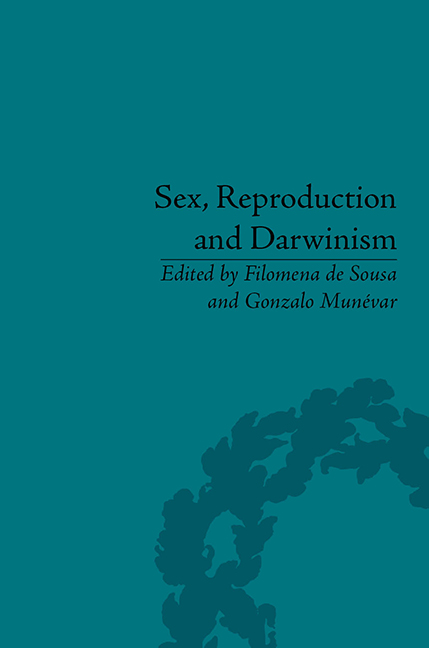Book contents
- Frontmatter
- CONTENTS
- Acknowledgements
- List of Contributors
- List of Figures and Tables
- Introduction
- Part I Reproduction, Mortality and Evolution
- Part II Reproduction without Sex?
- Part III Sex without Reproduction?
- 5 Evolutionary Theory, Constructivism and Male Homosexuality
- 6 Darwinism and Homosexuality
- 7 The Evolution of Female Orgasm: New Evidence and Response to Feminist Critiques
- Part IV Sexual Selection and Morality
- Part V Sex, Reproduction and Evolutionary Psychology
- Part VI Eugenics from Natural to Social Selection
- Notes
- Index
5 - Evolutionary Theory, Constructivism and Male Homosexuality
from Part III - Sex without Reproduction?
- Frontmatter
- CONTENTS
- Acknowledgements
- List of Contributors
- List of Figures and Tables
- Introduction
- Part I Reproduction, Mortality and Evolution
- Part II Reproduction without Sex?
- Part III Sex without Reproduction?
- 5 Evolutionary Theory, Constructivism and Male Homosexuality
- 6 Darwinism and Homosexuality
- 7 The Evolution of Female Orgasm: New Evidence and Response to Feminist Critiques
- Part IV Sexual Selection and Morality
- Part V Sex, Reproduction and Evolutionary Psychology
- Part VI Eugenics from Natural to Social Selection
- Notes
- Index
Summary
Introduction
Evolutionary explanations of human male homosexuality are sometimes charged with being essentialist, in that they assume such sexual orientation to be a deep characteristic of the individual – a characteristic variously described as ‘innate’, ‘immutable’ or ‘discrete’. Social constructionists, by contrast, argue that grouping individuals by means of their sexual orientation is rather arbitrary. Traditionally, evolutionary scientists and social constructionists have happily ignored each other at best, and ridiculed each other at worst. Biologists have laughed down constructionism as hypocritical, while even mild critics characterize it as a ‘position that lots of people have a hard time understanding’. Evolutionary views of homosexuality, in their turn, have been dismissed as half-baked, anachronistic and ‘naïvely insensitive to political connotations’.
However, both evolutionary and constructionist positions come in many guises, some of which are considered to be less extreme than others. In this chapter, we will flesh out some basic claims of the constructionist position and present three evolutionary approaches to homosexuality that go some way to incorporate these claims. The first approach builds on the notion of phenotypic plasticity in contemporary evolutionary biology, and suggests that same-sex sexuality could be a conditional adaptive strategy that enables individuals to strengthen alliances with non-kin. As such, this approach dovetails with one of the pet topics in the social constructionist literature: the historical and cross-cultural diversity of same-sex sexual behaviour.
- Type
- Chapter
- Information
- Sex, Reproduction and Darwinism , pp. 77 - 94Publisher: Pickering & ChattoFirst published in: 2014



